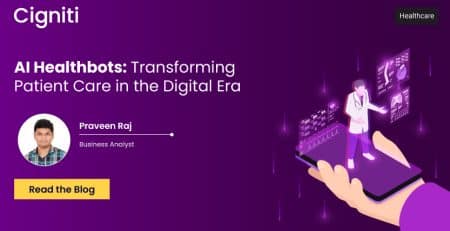Simplify Data Integration with Artificial Intelligence
According to Statista, the global AI market is worth $100 billion and is expected to grow 20fold by 2030. This massive growth impacts various areas, including data management, where AI in data integration is essential, as traditional methods can’t keep up with the scale and complexity of modern data.
Data-driven decision-making is fundamental for any business that wants to thrive in today’s cut-throat environment. In fact, enough evidence today proves that data-driven decision-making powered by artificial intelligence (AI) platforms can help businesses expedite their operations, thus saving valuable time and money.
Such decisions involve leveraging past information to predict the challenges and opportunities that await an enterprise in the future.
Data integration is the combination of technical and business processes that create useful datasets for business intelligence and analytics from diverse traditional and non-traditional data sources.
Data collected from various on-premise and cloud sources is integrated into a holistic data integration solution to enable DataOps’ effective, enterprise-ready data pipeline. Data architecture defines the data flow from these source systems and the procedure for collecting, cleansing, normalizing, and storing the data for processing.
Hindrances to Effective Data Integration
Integrating data from relational databases, streaming data services, and several other real-time sources has grown increasingly challenging for businesses. To extract hidden business insight, well-designed data integration processes guarantee that the data is controlled, governed, and trusted. Attempts at effective data integration may be inhibited by:
- The challenges of controlling data coming from many sources
- Multiple issues arising from managing different data integration tools
- A business environment that allows multiple data handlers to access, edit, copy, and duplicate data
- The sluggish movement of data from data lakes and the Cloud
To avoid some of these hindrances, businesses must start thinking about data as a corporate asset rather than a by-product. Beyond design considerations, using cutting-edge technologies like AI has successfully reduced the number of large data integration challenges.
Key Role of AI in Data Integration
According to the Harvard Business Review, AI will contribute $13 trillion to the global economy over the next ten years, and businesses deploying AI across the enterprise will gain a considerable advantage.
AI and machine learning (ML) technologies have been demonstrated to increase overall data integration project results and significantly reduce the heavy lifting frequently involved with data integration initiatives. AI in data integrationplatforms helps change the way businesses make decisions in the following ways:
Faster data mapping leads to quicker decision-making: With AI-enhanced solutions, users may map customer data in minutes instead of months. AI may automate the generation of data transformation mapping using a system metadata catalog and a prebuilt data integration template. Decision-making and data transformation are sped up as a result. Even non-technical business people may develop intelligent data mappings using ML algorithms thanks to AI-data mapping tools. This will improve the accuracy and speed of the data mapping process. IT personnel may focus on more valuable tasks, while business users who are not technically savvy map and integrate data.
Better processing of huge data:By employing machine learning data integration methods, users may quickly and efficiently ingest, integrate, and analyze big data. When processing massive data, legacy systems lack precision and speed. Conversely, machine learning may enable business users to dissect huge data structures and create data models without a lot of code.
Enhance intelligence through autonomous learning:As AI automates the creation of data transformation mapping in the Extract, Transform, and Load (ETL) process, business users become more involved in learning the patterns and hidden trends from the carefully curated large datasets and applying statistical modeling to them to derive accurate business insights from those data sets.
Closing Lines
Ai data integration is progressively automating the development of data pipelines and organization-wide application flow. Data integration tools now have access to large volumes of varied data thanks to big data storage (HDFS/ Hive/ Cloud storage). The big data storage enables its embedded recommendation engine to intuitively deduce the data structure components from this and use the same for automating the repetitive and redundant data integration tasks.
To meet the rising demand for data integration pipelines, the AI engine is gradually enhancing its inferred and tagging analytical logic, metadata discovery framework, and learned knowledge base.
Cigniti helps global enterprises manage various forms of data from their applications, systems, databases, warehouses, and digital or offline data. We provide a single process for integrating all the data into a single hub to prevent data silos and ensure that the appropriate information is made available to the appropriate user. With the help of our ai data integration services, you can maximize the value of your data, improving both operational effectiveness and customer satisfaction.
To know more about our data integration capabilities, visit Cigniti Digital Engineering.





Leave a Reply